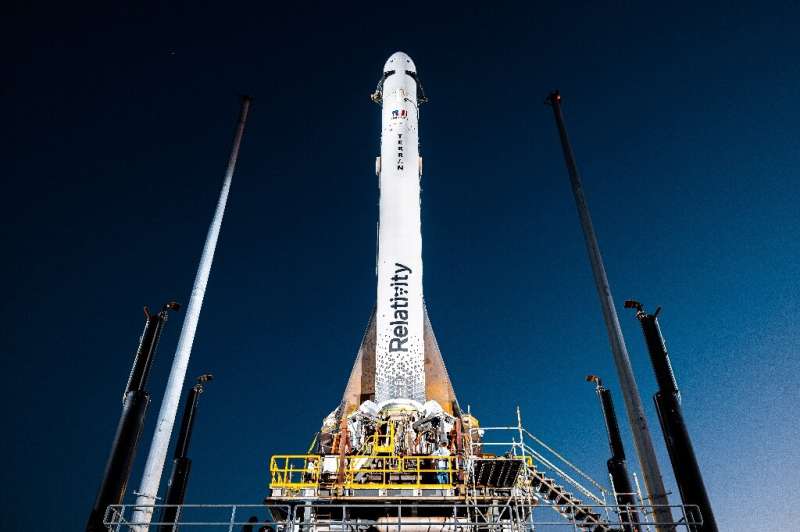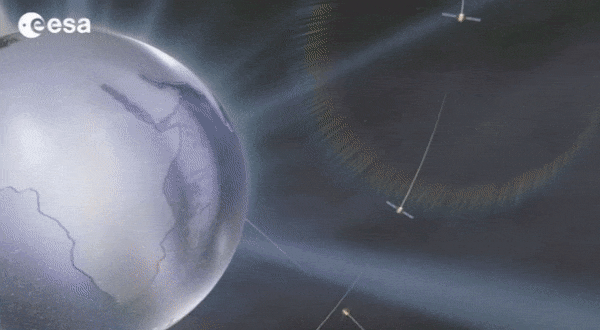Antenova's tiny GNSS module with integrated antenna, high precision and low power
Saturday, 11 March 2023 22:19 Antenova Ltd, the UK-based manufacturer of antennas and RF antenna modules for M2M and the IoT, is to reveal its latest compact high precision GNSS module at Embedded World. The new product, GNSSNova M20072, is a GNSS receiver with integrated GNSS antenna and greatly reduced power consumption.
M20072 uses a MediaTek 12nm low energy chip with 1.8V power supply which uses 70% less power than
Antenova Ltd, the UK-based manufacturer of antennas and RF antenna modules for M2M and the IoT, is to reveal its latest compact high precision GNSS module at Embedded World. The new product, GNSSNova M20072, is a GNSS receiver with integrated GNSS antenna and greatly reduced power consumption.
M20072 uses a MediaTek 12nm low energy chip with 1.8V power supply which uses 70% less power than China's space technology institute sees launches of 400 spacecraft
Saturday, 11 March 2023 22:19 The China Academy of Space Technology has developed and successfully launched a total of 400 spacecraft with its Tianhui 6 twin satellites sent into space on Friday morning.
The two satellites were launched onboard a Long March 4C carrier rocket and will be used for geographic mapping, land resource survey, and scientific experiments, among others.
The CAST, affiliated with the China
The China Academy of Space Technology has developed and successfully launched a total of 400 spacecraft with its Tianhui 6 twin satellites sent into space on Friday morning.
The two satellites were launched onboard a Long March 4C carrier rocket and will be used for geographic mapping, land resource survey, and scientific experiments, among others.
The CAST, affiliated with the China Humanity's quest to discover the origins of life
Saturday, 11 March 2023 22:19 "We are living in an extraordinary moment in history," says Didier Queloz, who directs ETH Zurich's Centre for Origin and Prevalence of Life and the Leverhulme Centre for Life in the Universe at Cambridge. While still a doctoral student Queloz was the first to discover an exoplanet - a planet orbiting a solar-type star outside of Earth's solar system. A discovery for which he would later receive
"We are living in an extraordinary moment in history," says Didier Queloz, who directs ETH Zurich's Centre for Origin and Prevalence of Life and the Leverhulme Centre for Life in the Universe at Cambridge. While still a doctoral student Queloz was the first to discover an exoplanet - a planet orbiting a solar-type star outside of Earth's solar system. A discovery for which he would later receive SpaceX launches 40 OneWeb internet satellites, lands booster
Saturday, 11 March 2023 22:19 A SpaceX Falcon 9 rocket launched 40 broadband satellites into a polar orbit for the London-based company OneWeb on Thursday, March 9, and eight minutes later the rocket's first stage booster landed back at the Cape Canaveral Space Force Station (CCSFS).
The 229-foot-tall (70-meter) Falcon 9 rocket using Booster B0173 lifted off from Space Launch Complex 40 (SLC-40) at CCSFS, Florida, at 2
A SpaceX Falcon 9 rocket launched 40 broadband satellites into a polar orbit for the London-based company OneWeb on Thursday, March 9, and eight minutes later the rocket's first stage booster landed back at the Cape Canaveral Space Force Station (CCSFS).
The 229-foot-tall (70-meter) Falcon 9 rocket using Booster B0173 lifted off from Space Launch Complex 40 (SLC-40) at CCSFS, Florida, at 2 China Aerospace Studies Institute introduces research, analysis toolkit for commanders
Saturday, 11 March 2023 22:19 The Department of the Air Force launched a toolkit March 8, 2023, providing a supplemental resource for commanders to tailor training specifically oriented to the United States' pacing challenge.
Developed by Air University's China Aerospace Studies Institute, or CASI, the China Toolkit contains a repository of Department of Defense and external videos, presentations, articles and studies
The Department of the Air Force launched a toolkit March 8, 2023, providing a supplemental resource for commanders to tailor training specifically oriented to the United States' pacing challenge.
Developed by Air University's China Aerospace Studies Institute, or CASI, the China Toolkit contains a repository of Department of Defense and external videos, presentations, articles and studies Relativity scrubs first Terran 1 launch again
Saturday, 11 March 2023 21:30
Relativity Space scrubbed a launch of its Terran 1 rocket March 11 after two last-minute aborts for technical issues.
Riding out rough air in inflight connectivity | Connecting the Dots
Saturday, 11 March 2023 14:43
Forecasts for a weakening global economy this year are a drag for an in-flight entertainment and connectivity (IFEC) market that many satellite operators are relying on to expand their businesses.
World's first 3D printed rocket set for inaugural flight
Saturday, 11 March 2023 07:25
The world's first 3D printed rocket is scheduled to blast off from Florida on Saturday on the maiden flight of an innovative spacecraft billed as being less costly to produce and fly.
Liftoff of the rocket, Terran 1, had been scheduled for Wednesday at Cape Canaveral but was postponed at the last minute because of propellant temperature issues.
The new launch window for the rocket built by California aerospace startup Relativity Space to put satellites into orbit is from 1:00 pm to 4:00 pm (1800 GMT to 2100 GMT) on Saturday.
Terran 1 is set to reach low Earth orbit eight minutes after blastoff on a voyage intended to gather data and demonstrate that it can withstand the rigors of liftoff and space flight.
Canadian military orders space surveillance micro satellite
Friday, 10 March 2023 22:24
Canada’s Department of National Defence is moving ahead with a new microsatellite project for space domain awareness.
Intelsat and Eutelsat forge multi-orbit capacity deal
Friday, 10 March 2023 22:05
Eutelsat said March 9 it has signed a multi-million euro deal to provide more satellite capacity to Intelsat, including from OneWeb’s low Earth orbit network the French operator is acquiring.
Space sector reacts to collapse of Silicon Valley Bank
Friday, 10 March 2023 21:37
Space companies and investors are reacting to the collapse of Silicon Valley Bank, a financial institution many relied on for investment, loans and traditional banking services.
Space Force allocates three historic Cape Canaveral launch pads to four companies
Friday, 10 March 2023 21:09
The U.S. Space Force is allocating three launch complexes at Cape Canaveral, including one used for several NASA Mercury missions six decades ago, to four small launch vehicle startups as the service tries to keep up with growing launch demand.
RS21 earns patent for AI-based monitoring
Friday, 10 March 2023 13:00
RS21's artificial intelligence-based software called Space Prognostic AI Custodian Ecosystem, or SPAICE, is aimed at improving satellite monitoring.
The post RS21 earns patent for AI-based monitoring appeared first on SpaceNews.
Galileo: no way without time
Friday, 10 March 2023 12:55
Europe’s Galileo is the world’s most precise satellite navigation system, providing metre-level accuracy and very precise timing to its four billion users. An essential ingredient to ensure this stays the case are the atomic clocks aboard each satellite, delivering pinpoint timekeeping that is maintained to a few billionths of a second. These clocks are called atomic because their ‘ticks’ come from ultra-rapid, ultra-stable oscillation of atoms between different energy states. Sustaining this performance demands, in turn, even more accurate clocks down on the ground to keep the satellites synchronised and ensure stability of time and positioning for


 Image:
YPSat’s trial by vacuum
Image:
YPSat’s trial by vacuum